
2019/08/19
Breadcrumbs navigation
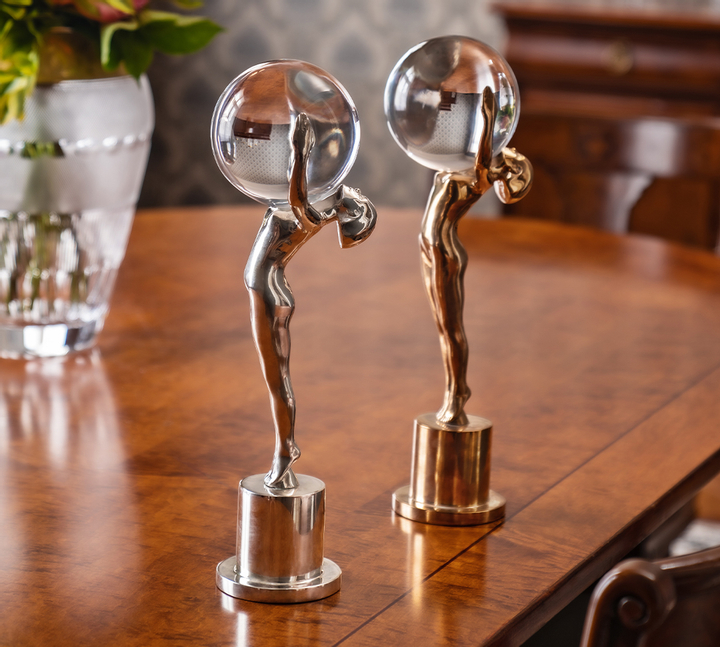
The grand prize at the International Film Festival Karlovy Vary in the form of a girl lifting a crystal globe embodies seemingly antithetical qualities – it is strong, heavy, but at the same time uplifting. “These qualities are based on the very nature of crystal,” says the author and artist Tono Stano.
The new prize was first awarded at the Jubilee 35th Annual Festival in 2000. How did it come about?
The original prize seemed unsatisfactory and impractical. Its appearance at the time was based on the shape of a Karlovy Vary wafer and it was placed in a film box. At the gala awarding of the laureates of the festival, they often didn't know what to do with it. When actors and directors wanted to shake hands or hug, they usually stuck it under an armpit. And then it happened that it fell out, went rolling along the podium, and people had to try and catch it. Quite a few comic situations occurred which discredited the prize.
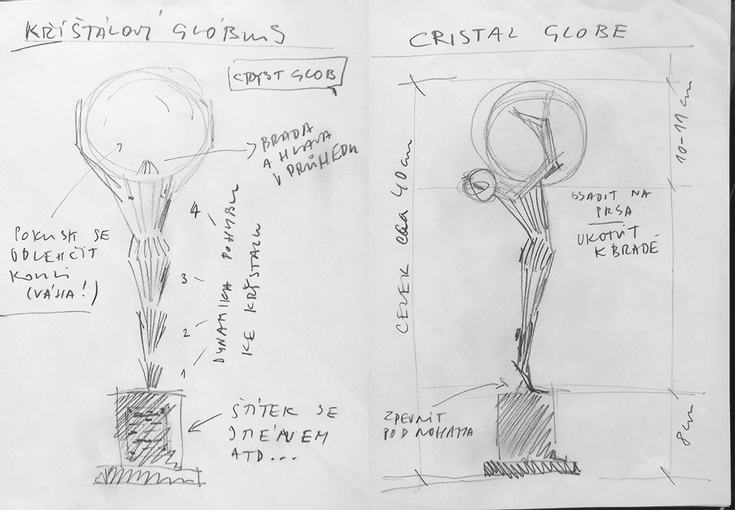
Was that the moment you thought of proposing a replacement?
Yes, at that time we were having meetings as part of the artistic group, including festival director Jiří Bartoška, graphic designer Aleš Najbrt, director, screenwriter, and choreographer Michal Caban, and his brother the director and screenwriter Šimon Caban, who are the longtime creators of the festival opening ceremonies. I proposed that we could have a new prize made. We tried out a number of different sculptors but we didn’t find a suitable one. So we said we would try coming up with it ourselves – the only requirement Jiří Bartoška had was that the new prize should be easy to take in your hand. At the time I had a clear idea how it should look. First, we drew it, then we shot photos based on our sketches. The shots we got served as the basis for adapting it to the 3D model. I brought the photos to the meeting and got a green light to implement. At the next meeting, I brought the completed sculpture.
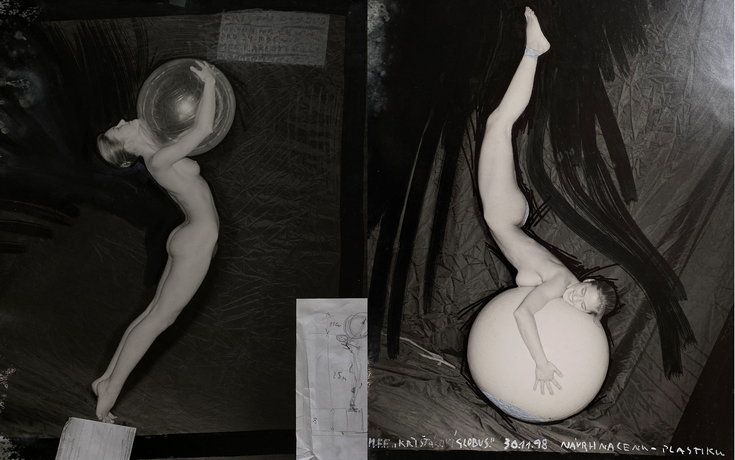
During the photoshoot, the author hung the model from her legs by a rope so that her head pointed downward. He gave her a large ball that matched the proportions of the figures and globe sizes in his sketches. He then arranged several shots in different poses. In his proposals, he had included a variant in which the statue could be pointed globe down using a removable stand. But given the requirements that the prize be compact, he opted for a variant with a solid pedestal.
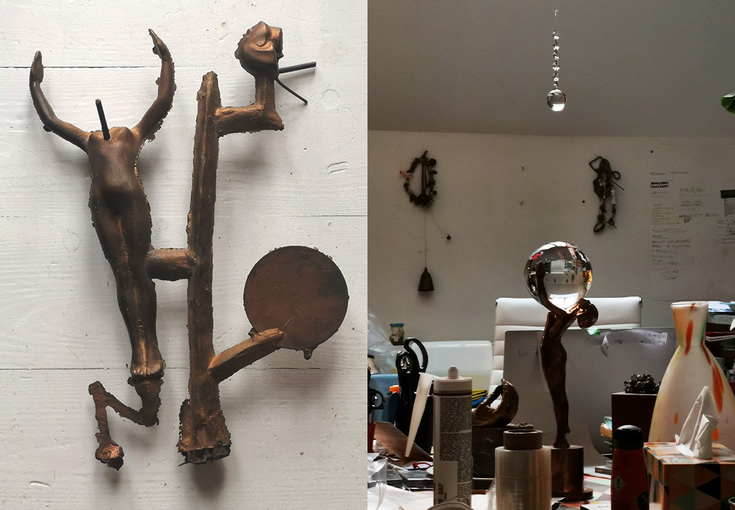
From your photography, it is clear that you understand the medium of painting and sculpture. What experience did you have at the time with sculpting?
When I was sitting for my admission exams for the art and industry secondary school, I did modeling and painting. Only after that did I begin studying photography. I feel good in different media. I feel a need to create. If I wanted to sew, I would get a sewing machine and learn it. The craftsmanship can sometimes be too constraining to creativity. There is a need to approach it sensitively, but I have no barriers to freely enter various different media.
What did you use as a symbolic basis when you were creating the statue?
In the film context, it interested me that the creators try to capture life – something big, also partially abstract. That is what the crystal globe symbolizes. The glassworks there very well – it is a heavy material but also seems very light. The crystal ball also optically refracts the image and thereby the world as well. And the female figure can hug it, hold it, and at the same time carry it. As a result, the prize evokes joy and euphoria. That's what I was going for.
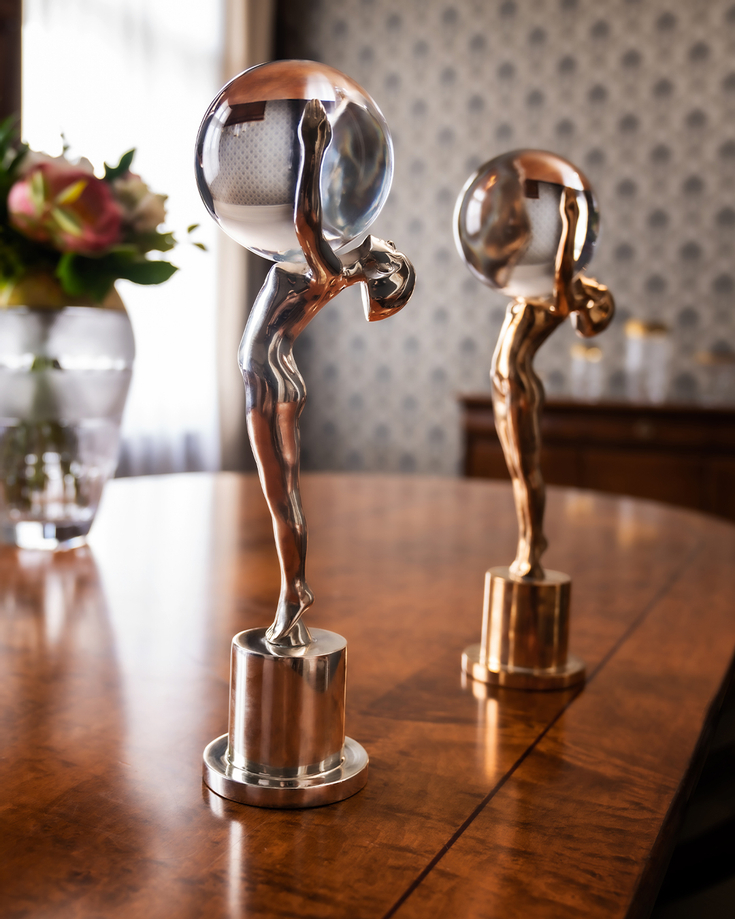
The statue also recalls the work of Art Nouveau and Art Deco
Intentionally. I wanted for the prize to flow naturally into the film world and in such cases, it's good for it to evoke something we know from history. For that reason, I played with an exchangeable morphology that uses Art Nouveau or Art Deco. For prizes that are intended to send a universal message, it works really well when I suggest something to people, albeit in a slightly different form. That way I retain distinctiveness and openness in communication.
Compared to the initial shots, the resulting figure has a bob instead of a ponytail. Why?
The change was made when I was editing the proposal into the final stylizing in 3D. The bob happened then, which supports the dynamics of the sculpture. Every sculpture should carry certain elements of communication culture, otherwise people won't put it on display. These are fine details that cannot be underestimated. For this statue, the bob copies the rounded line that repeats in the buttocks and the bend of the back. When these lines connect, it supports the expression of the entire work. Likewise, you should see that when you look at the statue from above, the round shape repeats in the pedestal and the crystal ball – yet when looking from the side, you can clearly make out the female figure.
What if these details were missing?
Then people wouldn’t take it as their own as much. I myself love looking at ancient sculptures. They are so artful, they’re actually perfect. As a result they remain current to this day.
Did you ever wonder if the globe should be a different color?
Not really. If a prize is going to enter awareness, it’s good to keep it simple, since it’s competing with other film prizes. When you do it in lots of different versions, it starts to weaken. The only thing I would change today is the size. Maybe I would make it a third smaller so it wouldn't be so heavy.
You didn't want to draw too much attention to the statuette. Why?
I liked the idea that the prize should create an impression as if it had existed for all time. That someone merely found it among antiques in the attic, dusted it off, and then it found its way into the world of film without anyone making a lot of pointless humbug around it. And that’s how it worked. People accepted the new prize and it immediately gained popularity. Even bigwigs like the director Miloš Forman, who at the time already had the “wafer”, returned the original prize and wanted the new one.

This photographer welcomed us into his studio in Prague's Smíchov district and offered us a banana cake on porcelain plates with his own design with predominantly feminine motifs. Tono studies at FAMU in 1986 and since then has worked as an independent artist. His work is characterized by woman portraits and nudes that have become part of many private and public collections not only in the Czech Republic but also in the National Library in Paris and the Art Institute of Chicago. He began working with the Karlovy Vary International Film Festival in 1995 when he designed the first retro-style promotional campaign inspired by Gustav Machatý's Erotikon and Exctase.